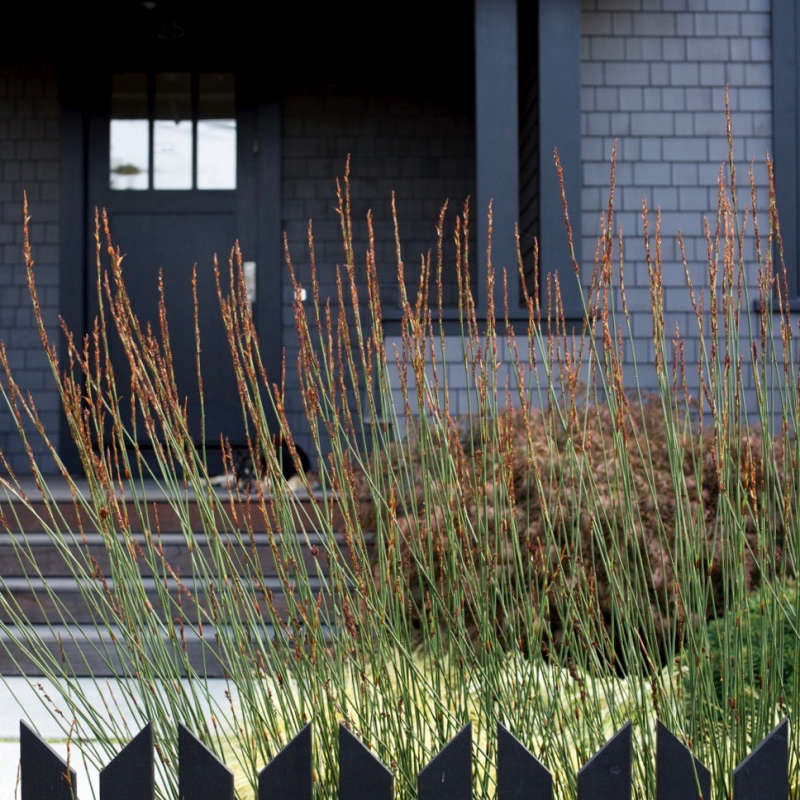

Cape rush looks like an ornamental grass and stands up to dry or windy conditions—but is evergreen, offering year-round appeal instead of sad brown clumps in winter.
Cape rush is not technically a grass; it’s a tufted perennial that grows in clumps with long, reedy leaf sheaths.
Although Chondropetalum looks like an airy grass with its foliage waving in a breeze, it’s actually an evergreen plant that hails from the Cape region in South Africa. (Historically, its leaves also have been used to thatch roofs and in brooms.)
In a landscape, cape rush creates an attractive perimeter if planted in clumps at the edge of a garden, alongside a path, or behind a fence.
Like many grasses, cape rush is tufted and sprays outward from a central clump of roots. Its hardy adaptability (you can grow it anywhere from a windswept seaside garden, to a dry landscape, to the edge of a pond). Cape rush is a happy companion to Salvia, Lavender, and other Grasses.